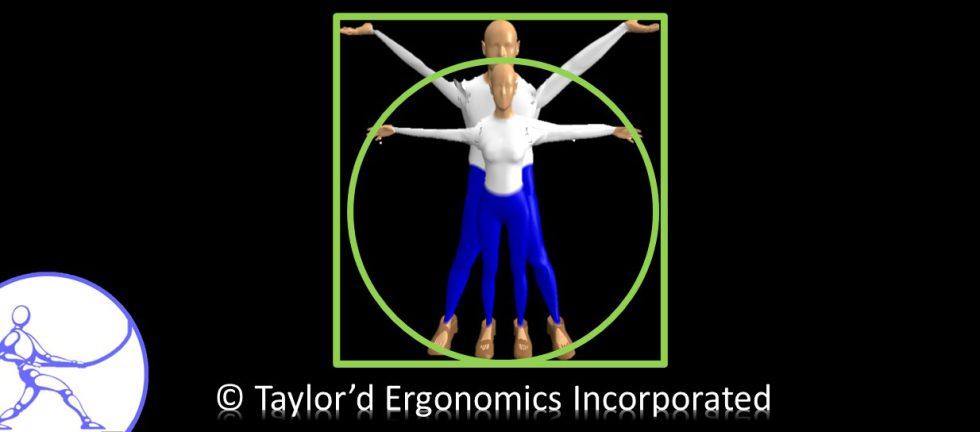It’s planning time, so we’ve put together a dozen questions that will help you to focus your ergonomics initiatives in the coming year. We audit ergonomics programs, so if you’d like more help setting some ergo goals, give us a call.
- Of all the injuries that happen in your facility, what percentage were strains and sprains last year? (If you have the same data from two years prior, how do these numbers compare?)
- Looking only at these strain/sprain injuries, find out how many were reported in each department, and how many people work in each department. For each department, divide the number of strain and sprain injuries by the number of employees to get a better indication of the injury rate per department. This should help you to prioritize your ergonomics efforts within your organization.
- If you have access to the number of lost time days and modified workdays, repeat steps 1-2 for modified and lost workdays. In addition to ergonomics (risk) assessments, departments with high modified work days should have thorough physical and cognitive demands analyses (PCDAs), to support your return-to-work efforts. Do you have these?
- Examine your process for accommodating injured workers. If supervisors (or your return-to-work coordinator) struggle with this process, consider whether PCDAs, third-party evaluations of suitability (demands-abilities evaluations), and job coaching might be appropriate. How could you optimize the process to accommodate medical limitations and bring people back to full duties most effectively?
- Every organization has productivity targets, and most organizations can easily identify jobs or departments that limit productivity – jobs that often need to run overtime to keep up, or processes that everyone has to wait for. Identify the top 10 productivity bottlenecks, and then identify the root cause. If the cause relates to human performance, ergonomics can help.
- Similarly, every organization has quality standards. Ask your quality manager where the biggest quality problems occur, and why. Again, if the cause relates to human error, ergonomics can help.
- Ask 10 random employees what they are supposed to do if they see an exposed pinch point. They’ll probably tell you they should report it. Then ask them what they should do if they identify a task that requires awkward working posture, repetitive movements,or a lot of effort. (Chances are, they may say, “Work with it.”) Ask yourself, do their responses align with your goals for your ergonomics program next year What do you want them to do?
- How do your employees feel comfort-wise? (Maybe you want to be the “most comfortable place to work” in your city!) Do employees think that they are as productive as possible? Do they feel their work is of the best possible quality? To find out, do a baseline ergo survey, asking as many employees as possible:
- On a scale of 1-10 with 1 being “perfectly comfortable” and 10 being “terrible pain”, how do you feel at the end of the week?
- On a scale of 1-10 with 1 being “never” and 10 being “all the time”, how often do you think muscle or joint discomfort limits your productivity? (Do you ever wrap up early, take extra breaks, or fail to meet production targets?)
- On a scale of 1-10 with 1 being “never” and 10 being “all the time”, how often do you think muscle or joint discomfort affects your work quality? Do you ever make mistakes, miss defects during an inspection, drop things, or not provide cheerful customer service?
- When an injury hazard is identified, you probably have a process in place to evaluate it, and to identify solutions. For strain/sprain hazards, how often is the control measure “administrative” (job rotation, worker technique), instead of “engineering” (new tool, platform, device). If your organization relies heavily on admin controls, consider a goal to look for engineering solutions first, and to use admin controls as interim measures, with a time limit.
- If a recommendation for an ergonomics improvement is made (e.g. a lift table, a different tool, or a new type of PPE that would improve employee comfort), how does it get funded, implemented, and evaluated? This process should be clear, and documented.
- When a new piece of equipment or a new line is planned, is the plan or equipment reviewed for strain/sprain injury hazards before it is implemented? Involving workers and an ergonomist at this stage can save a lot of time and money later.
- When your Health and Safety Committee reps inspect the workplace, how do they identify strain/sprain injury hazards? Providing tools and training to your JHSC can engage them in your ergonomics initiatives.
These questions are only a small sampling from our ergo program audit, but if you can dig out the answers, you’ll be well on your way to a successful program! If you’ll be launching a program next year, ask us about our featured “On-Site Ergo Plus” program, which offers a great way to jump start your ergo program and achieve your ergo goals for next year!


